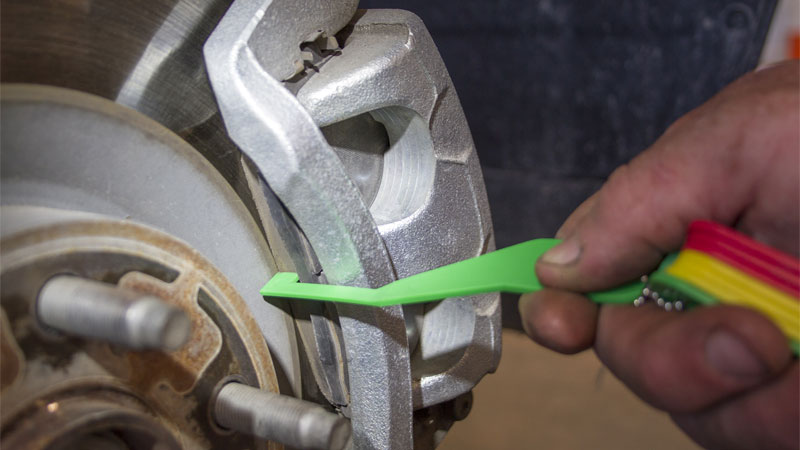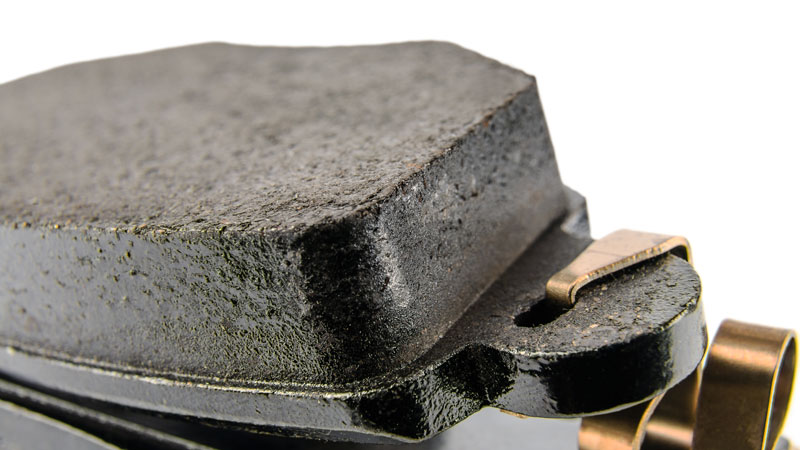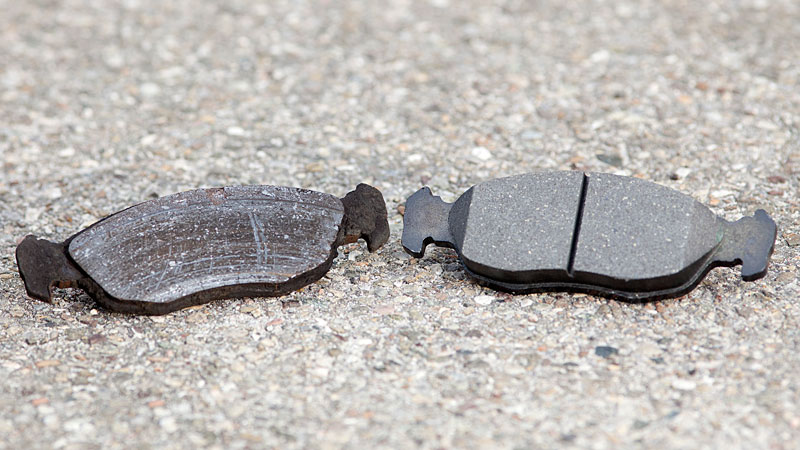Brake discs are the modern-day equivalent of the brake shoes that were used in the older drum braking system. Nowadays, most vehicles use a disc braking system to allow the driver to slow down and stop their vehicle.
This system is comprised of a brake caliper which contains pistons and brake pads. There is also a spinning disc that rotates along with the wheel when the vehicle is moving. The caliper applies pressure to the brake pad, causing the pad to push against the brake disc.
The friction created between the brake pad and brake disc causes the wheel to slow down its rotation. This happens whenever the driver steps on the brake pedal.

The materials used to construct brake pads include steel backing plates, shims, friction materials, rubberized coatings, and thermal insulation coatings. These are strong materials, but they are not strong enough to last forever.
There will come a time when your brake pads will need to be replaced. Since the brake pads get used whenever you step on the brake pedal, they tend to wear out after about 50,000 miles.
However, you can get a longer life out of your brake pads if you use ones which have the right thickness. We will go over thickness levels below.
Minimum Brake Pad Thickness

When your brake pads rub up against the discs, it wears down their friction material. When we measure the thickness of a brake pad, we are measuring the thickness of this material.
If your friction material were to get too thin, then it would not be able to slow down your vehicle quickly after you step on the brake pedal. If the material dissipated completely, then your brakes would ultimately fail.
You should follow the manufacturer’s recommended minimum brake pad thickness. In most cases, you’ll want to replace brake pads when they get down to about 3mm. While you can sometimes get away with 2mm, that is right around where the metal wear indicator gets exposed and causes a squealing sound against the disc.
Keep in mind that the lower the thickness, the worse the pads deal with heat and are at greater risk of cracking. Therefore, anywhere from 3mm to 4mm is the recommended thickness to replace brake pads in most cases.
You may be able to get away with slightly less thickness, but certainly nothing less than 2mm. At that point, braking performance can suffer and damage to your brake rotors is more likely.
Read also: How Long Do Brake Pads Last?
Recommended Brake Pad Thickness

If you are purchasing new brake pads, then you will want their friction material to be around 10 to 12 millimeters. This is the standard thickness size that you will see for most new brake pads.
It should take about 50,000 miles (more or less) for the thickness to 3 to 4 millimeters. It all depends on how aggressively and frequently you use your brakes so while 50k miles is average for many, 20k miles may be more realistic for some. Also, keep in mind that some brake pad materials last longer than others.
While you can purchase new brake pads at your local auto parts store or online, the best way to get the right brake pads is to get them replaced at the dealership which sold you the vehicle.
- Power Windows Not Working? (10 Common Causes and How to Fix) - February 8, 2024
- 14 Causes of a Car Losing Power When Accelerating - January 23, 2024
- 13 Causes of Poor Gas Mileage (Increase Your MPG) - December 13, 2023


Do you know of a safety law that requires Dealers to replace brake pads before selling a used vehicle? Also do you know what the limit is for pad thickness? Thanks
I have never worked at a dealership, so I am not sure. Your pad thickness limit will vary depending on the car and how it’s used, but it’s generally around 2 to 4 mm. If the car sees heavy braking and very high temperatures, the rule of thumb is that the pad should be no thinner than the backing plate.
“Get them replaced at the dealership that sold you the vechile”. Absolutely not necessary , you will pay top dollar for no good reason. Excellent after-market parts are available that meet or exceed OEM quality.
Why MM? Every time I get my cars inspected they list the thickness of brakes & tires in 32nds.
Depends on the shop. Either one works.
Why do dealers always recommend replacing brake pads and rotors at the same time? Front brake pads have 3 mm left.
You want a clean mating surface for the new brake pads, especially when you change pad material. Each time you turn rotors, you reduce the rotors’ thickness and their ability to dissipate heat. Rotors have a minimum thickness spec, but they’re often so cheap you may as well replace them while you’re in there.
Also, rotors often (but not always) have excessive runout at the end of brake pad life. This leads to the pulsing you feel in the brake pedal when you stop.
Is 10B Brake Pad Thickness the same as 10mm thickness?
Was looking for info in deciding whether or not to replace my brake pads. Your article provided the answer to my question. Thanks very much.
Thank you good information.
Thank you for the article. Very informative.
I learned alot from this especially about the components of break pad not only the required thickness but the risky size in mm of a warned out pads
Glad you liked it, Thabiso!
I’ve learned a lot from your blog. I never tried to change brake pads by owns. But i’ll try next time with your inspiration. Thanks a lot.